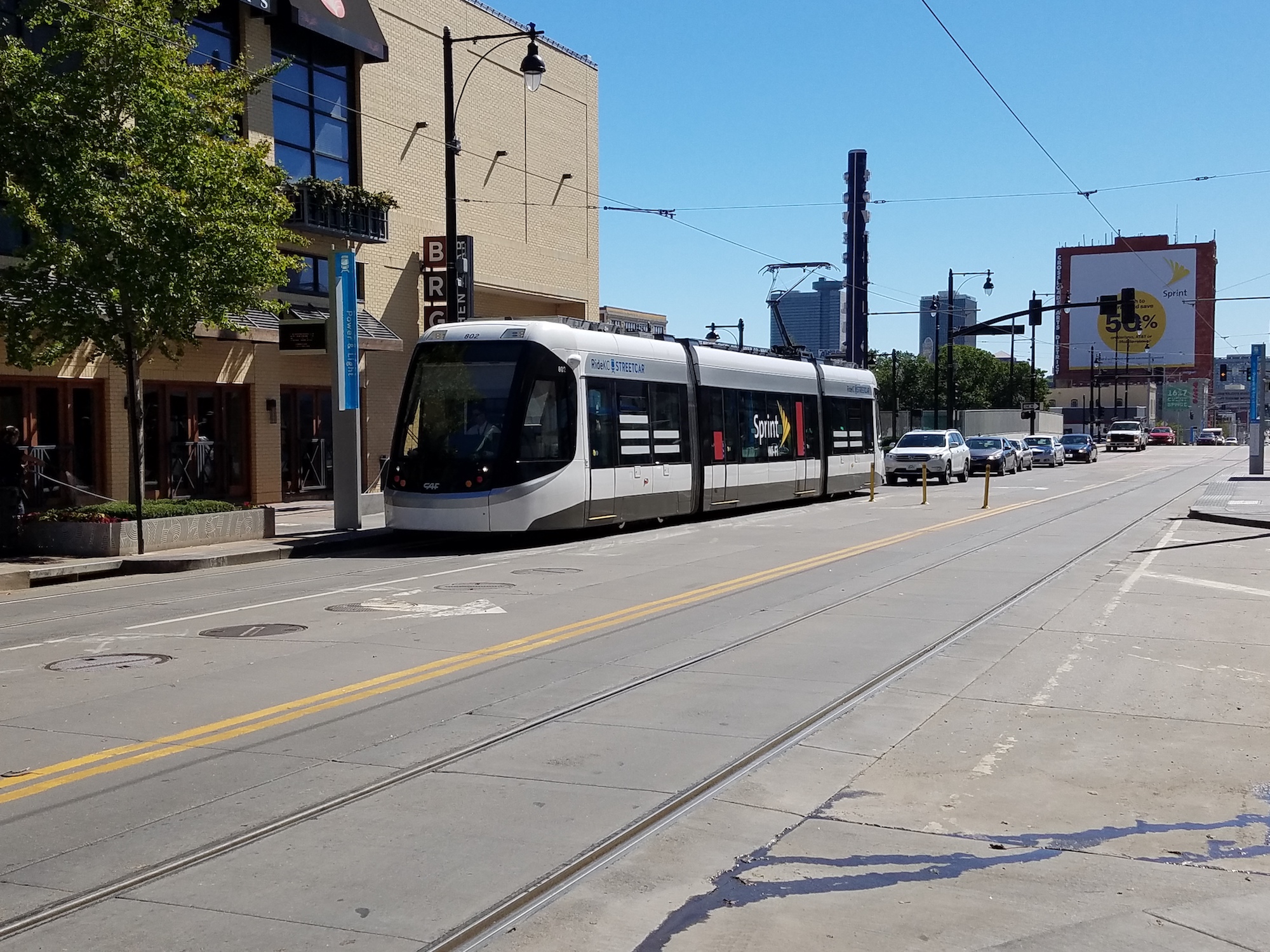The Next Step in Kansas City’s Push to Become a ‘Smart City’

Kansas City, Missouri Shutterstock
In the months ahead, local government leaders plan to build upon technology now deployed along the downtown streetcar line.
Kansas City, Missouri is preparing to expand its network of digital kiosks, public wireless internet and sensor technology.
The growth is set to take place along a planned bus rapid transit corridor that will be centered on Prospect Avenue, in an eastern part of the city that is lagging economically.
It will build upon technology already in place around the 2.2-mile KC Streetcar line that runs through downtown, mostly along Main Street.
Bob Bennett, who has served as the city’s chief innovation officer for nearly two years, sat down with Route Fifty last week to discuss the expansion. With the Prospect Avenue bus corridor project, he explained, the city will aim to tailor so-called smart city technology to the priorities of area residents—like connecting people with jobs and combatting crime.

Construction on the bus rapid transit line is scheduled to begin early next year and service is slated to start in 2020. As planned, the bus line would cost about $54 million to build and would extend about 9 miles, between 75th Street in the south and downtown Kansas City in the north.
The tech expansion will include about 6,000 new LED streetlights, which will have sockets for sensors and wireless internet equipment. Bennett said funding has been secured for the lighting fixtures and that he anticipates installation of them to begin in the next couple of months.
There are also plans to install additional ShotSpotter devices, which incorporate audio sensors to help locate where gunfire has occurred.
Bennett said the build-out along the new bus line of technology like wireless internet and sensor systems would likely begin around February 2018. “Every six months, what you’re going to see, is about another mile-and-a-half to two-mile expansion of the network,” he said.
The kiosks are expected to be similar to around two dozen already installed in downtown, around the streetcar line. Bennett described the devices as “seven-foot-tall iPhones” standing in the street and said they’re getting used, on average, about 25,000 times each month.
Expanded public Wi-Fi, according to Bennett, could give K-12 students who currently lack home internet access another option for completing homework that requires them to go online.
He also explained that the content featured on the kiosk screens at the bus shelters would be “hyperlocal” and might feature information developed by the city’s Full Employment Council, like how to access nearby job training opportunities, or where to get help preparing a resume.
Displaying data on the kiosks about incidents recorded by ShotSpotter was another possibility he mentioned. There’s been some debate about the effectiveness of ShotSpotter. But Bennett said in Kansas City the system helped lead to 184 arrests in the city last year.
Data remains at the core of the city’s smart city efforts.
“The technologies are interesting, and the technologies are cool, but they’re not smart. The only thing smart about a smart city is the data,” Bennett said. “We have figured out that probably 80 percent of the data that we need to truly be a smart city, we already had.”
This included data culled from crime statistics, road studies, and information related to tax collections and water use.
Combining existing city data with new sensor technology has unlocked new opportunities for the city to improve services and cut costs, according to Bennett.
For instance, he said a combination of analytics and traffic sensors have enabled the city to predict, down to the block, where potholes will likely form and to then preemptively take action to resurface streets before they start to get cratered.
“That’s literally millions of dollars that we’re saving because we’re using the data better,” Bennett said.
He acknowledged snags with the city’s smart cities initiatives, pointing to multiple versions of the kiosks that the city has so far tried. And to a pilot project with Bridj, an app-based, shuttle van service, which attracted slim ridership. Bridj, a Boston-based startup, shutdown earlier this year.
Key to keeping the appetite alive in the city for smart city initiatives, Bennett said, has been experimenting with low-cost pilot projects and sharing risk with the private sector when possible.
“It’s been very iterative. We have failed a lot so far,” he added. “But we’ve learned a lot.”
Bill Lucia is a Senior Reporter for Government Executive’s Route Fifty and is based in Washington, D.C.
NEXT STORY: How to verify a 3-D printed object






